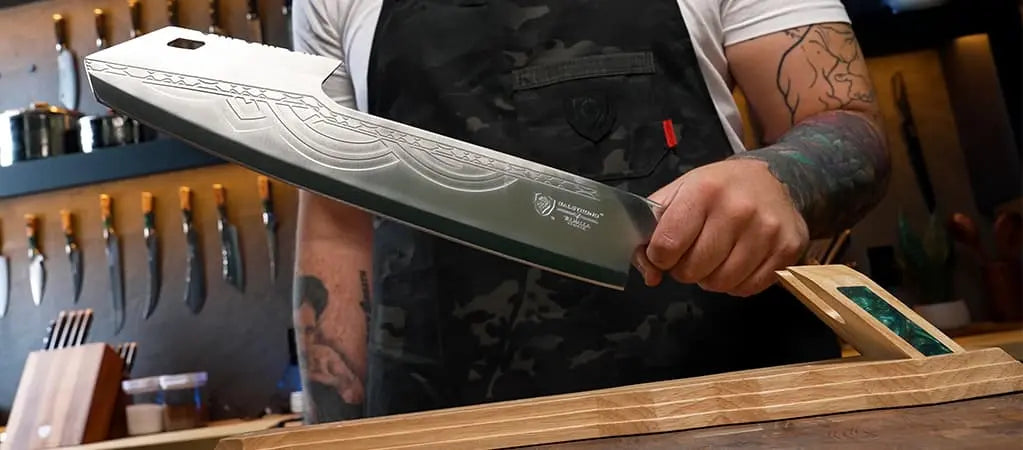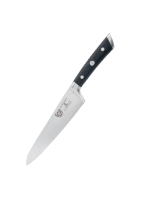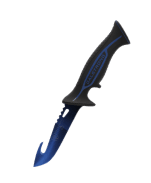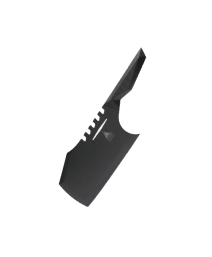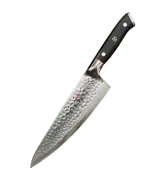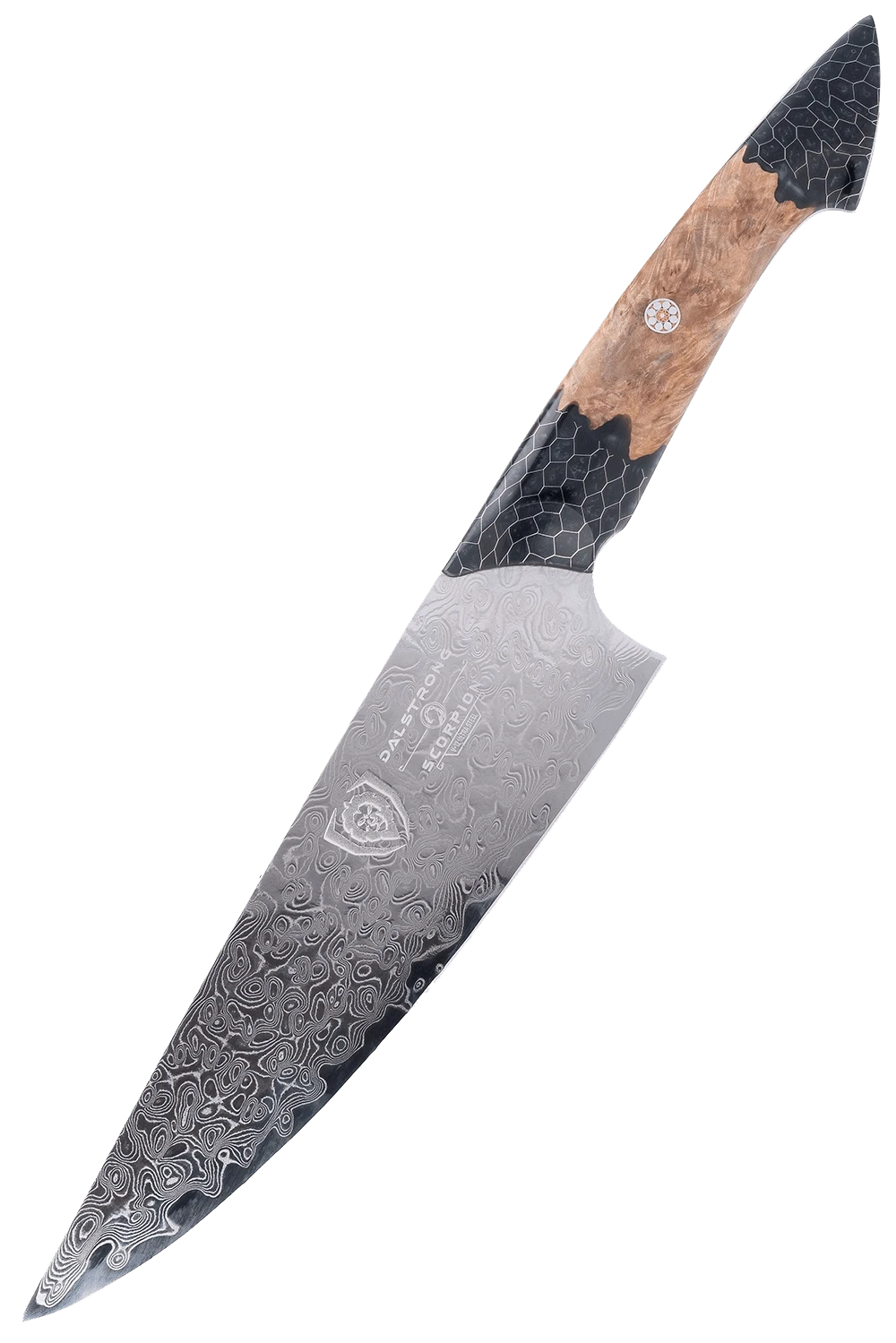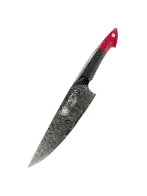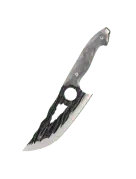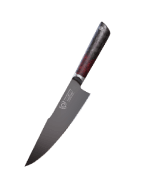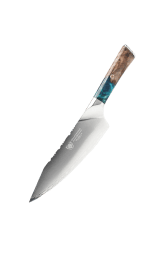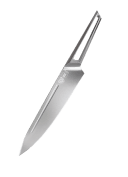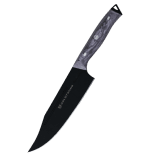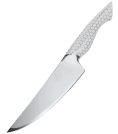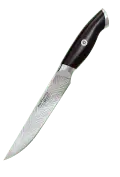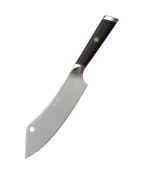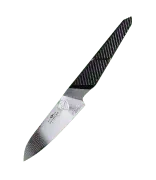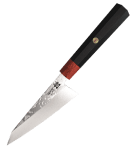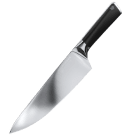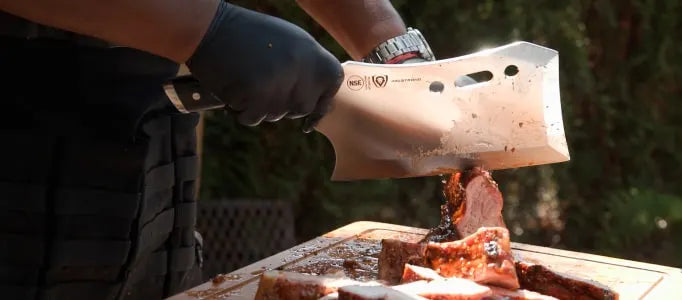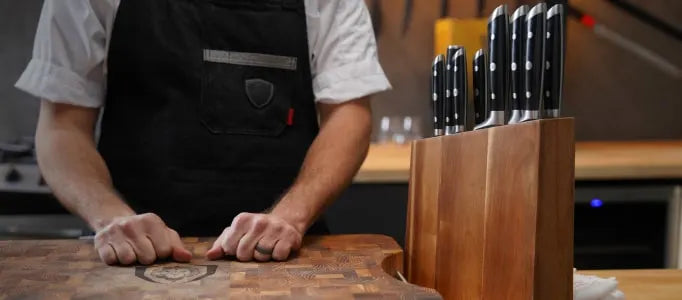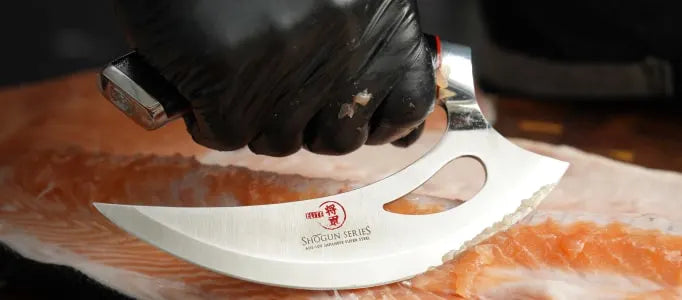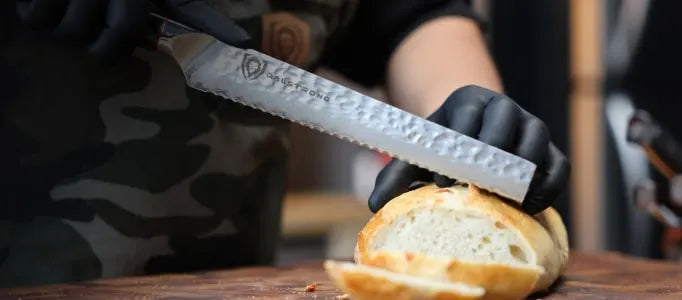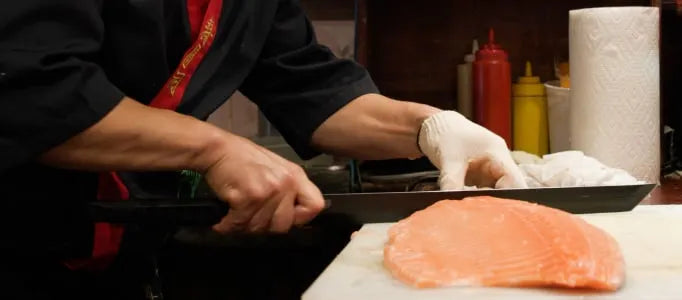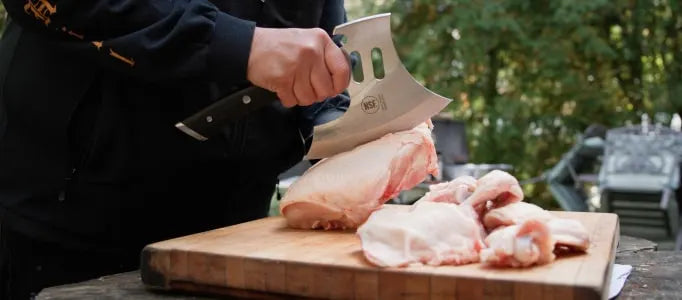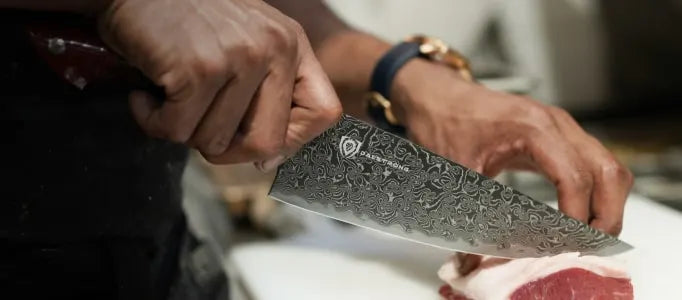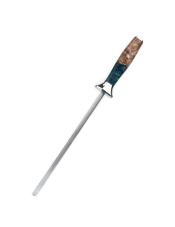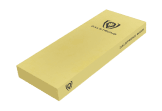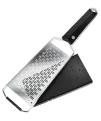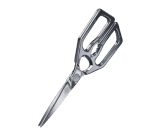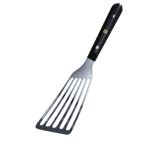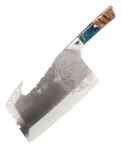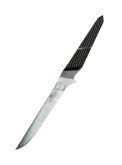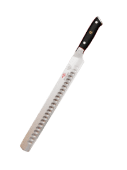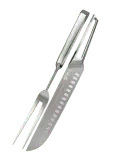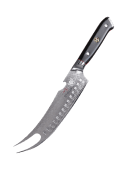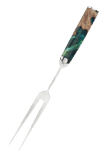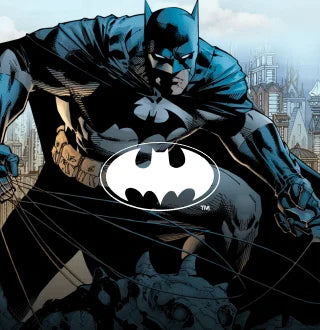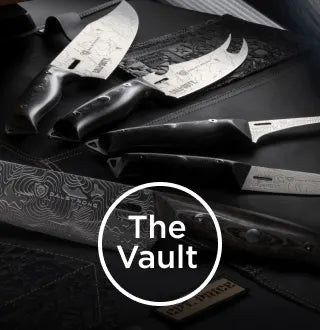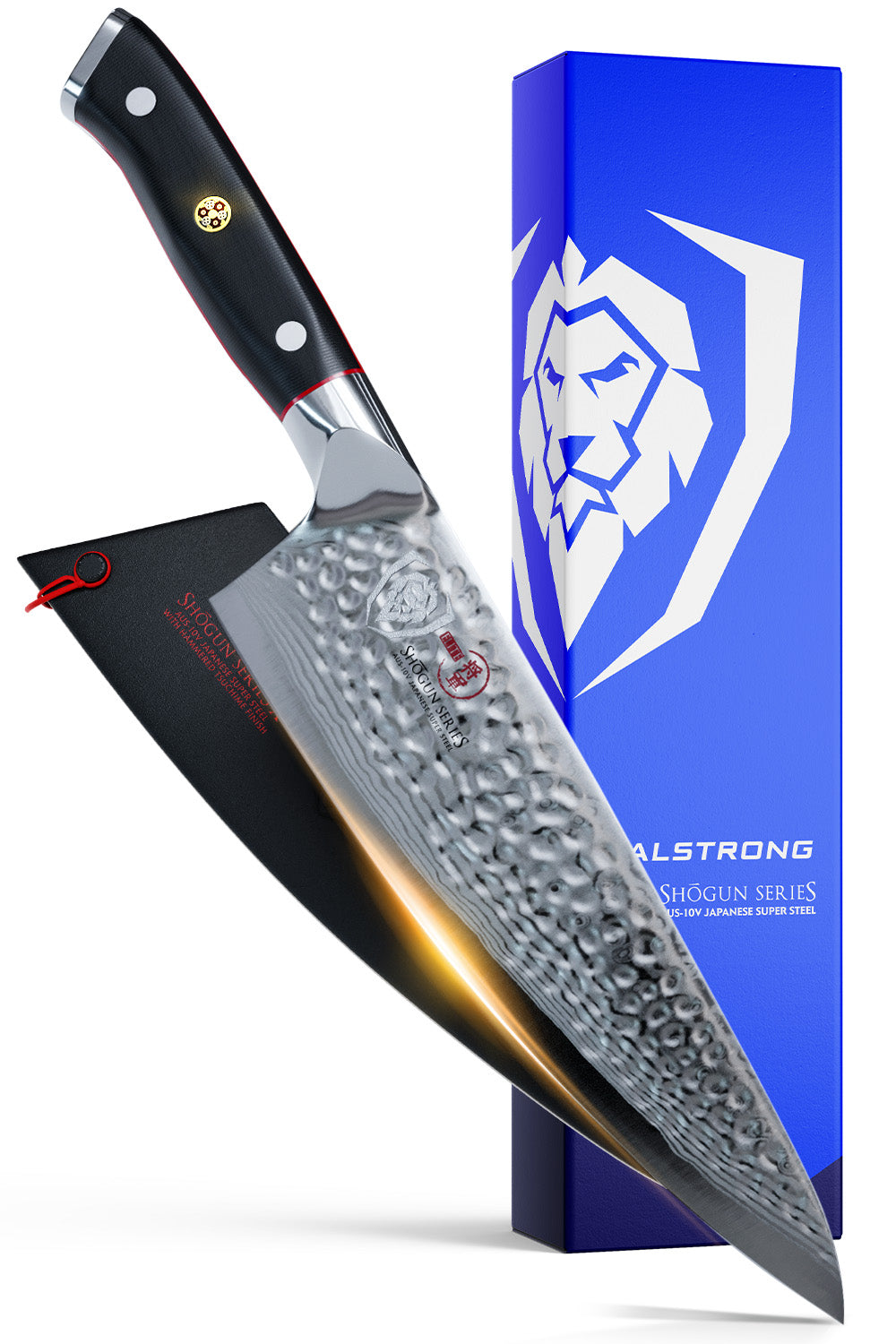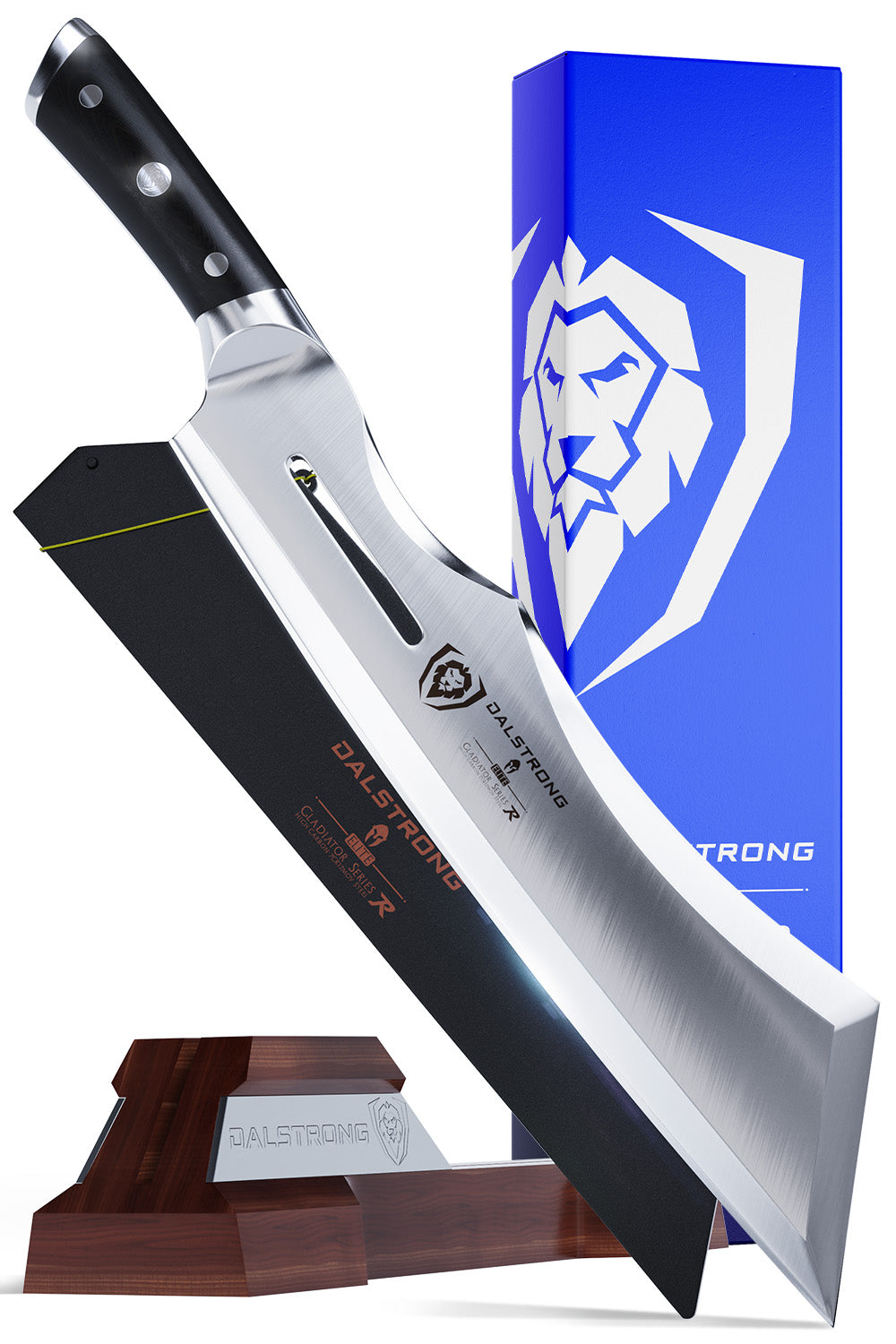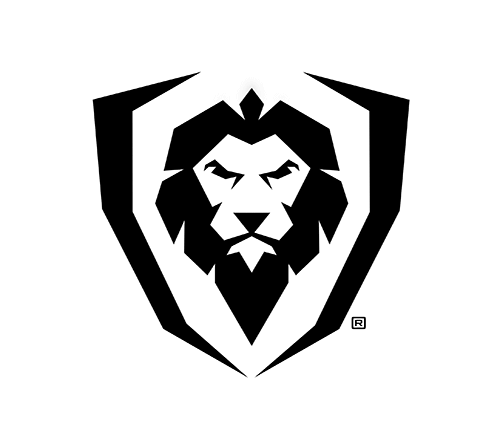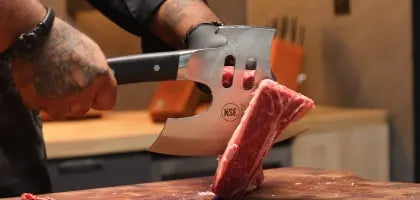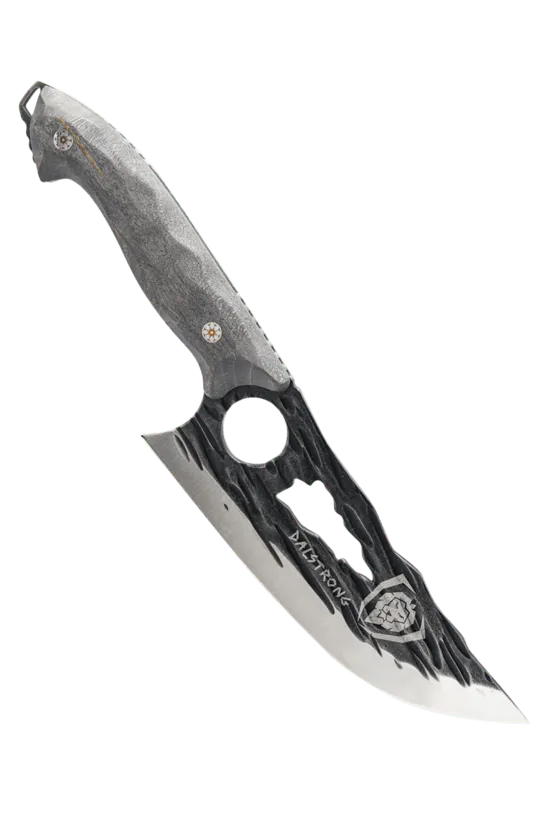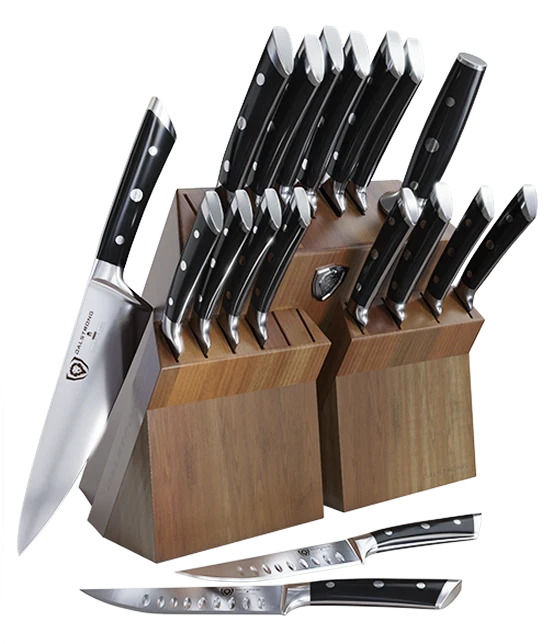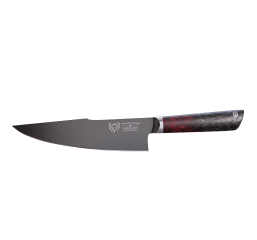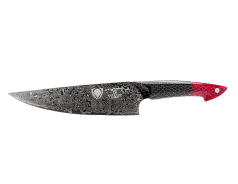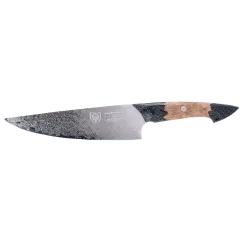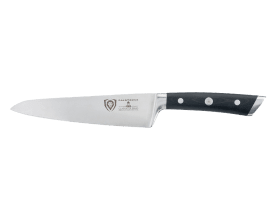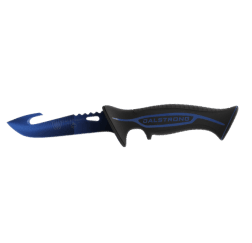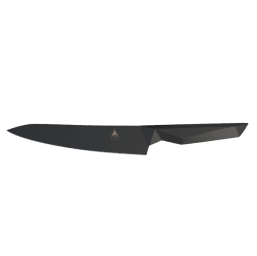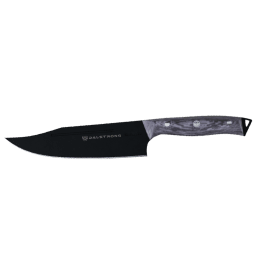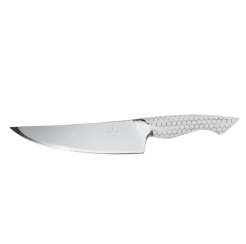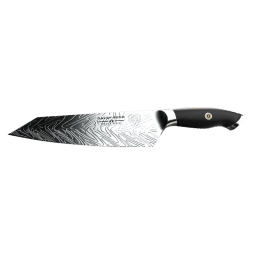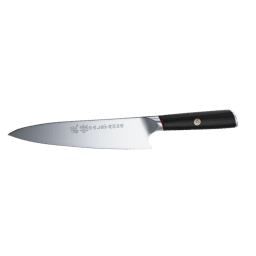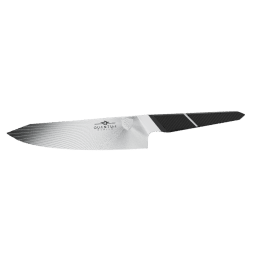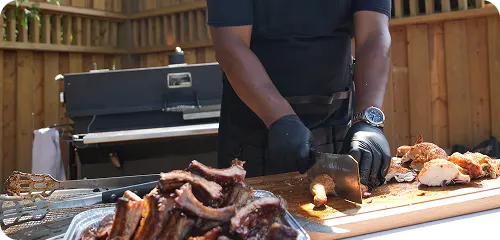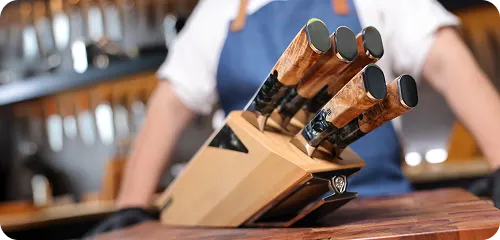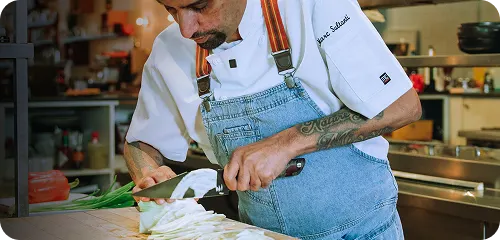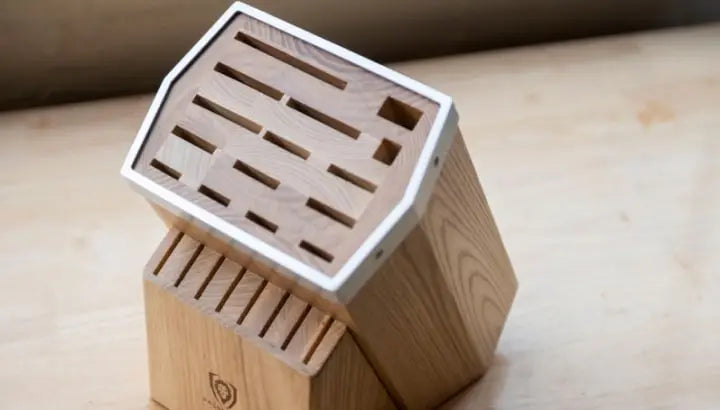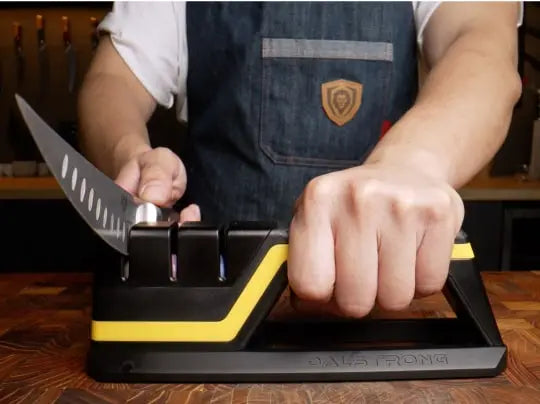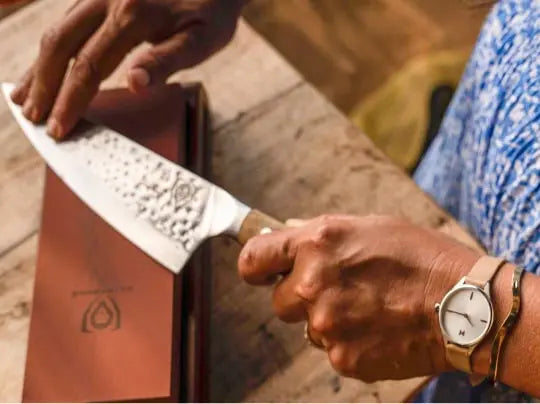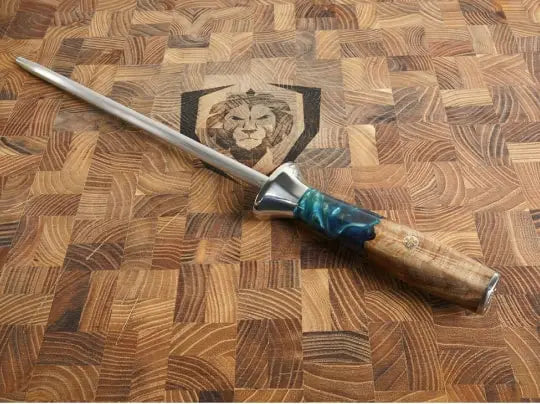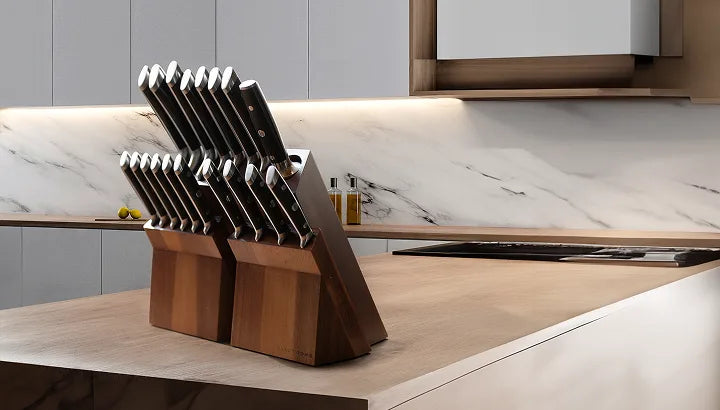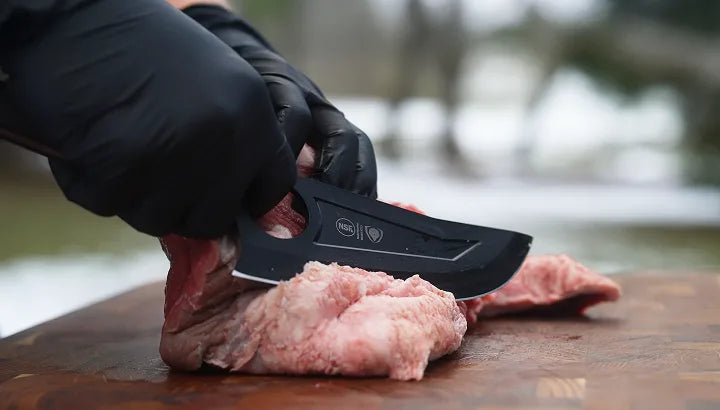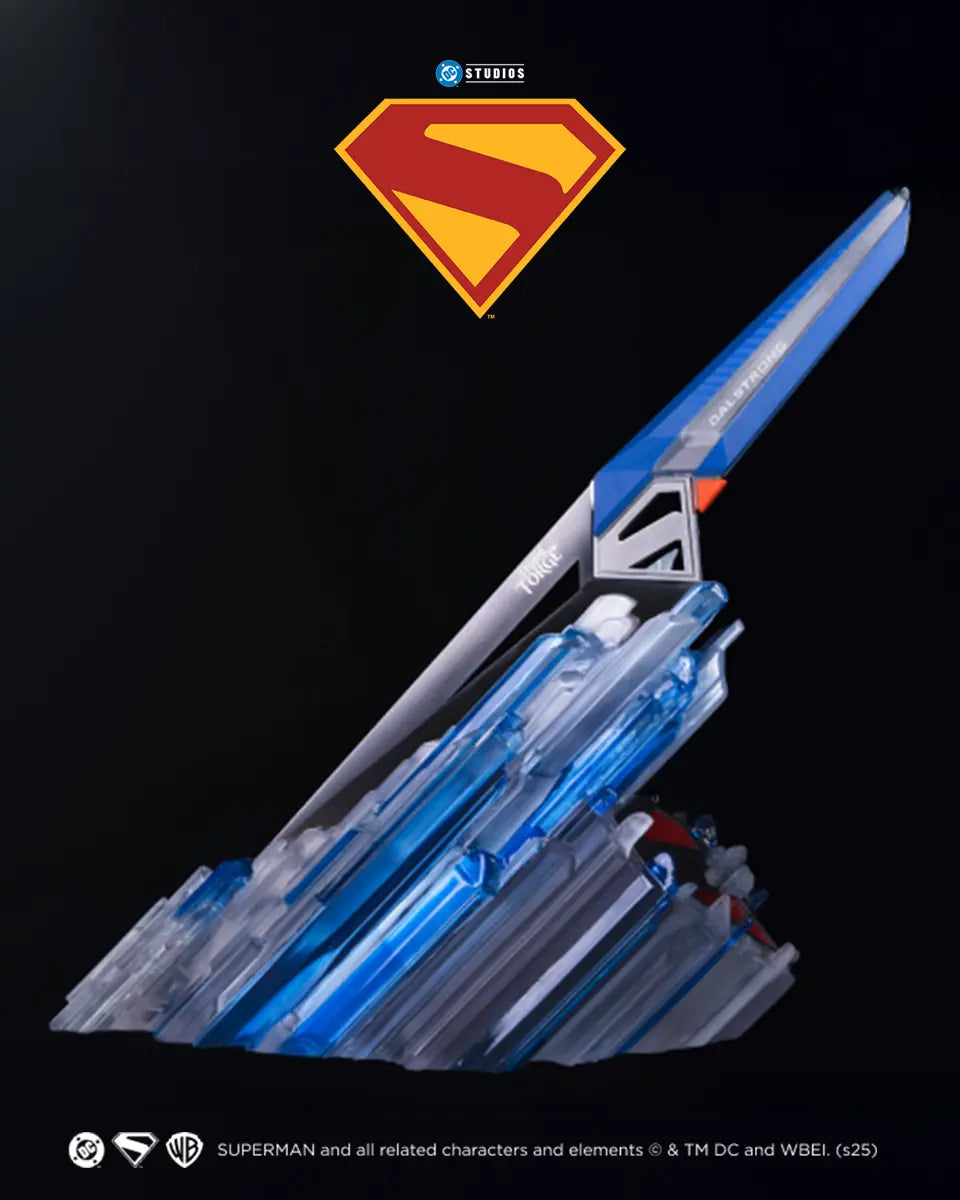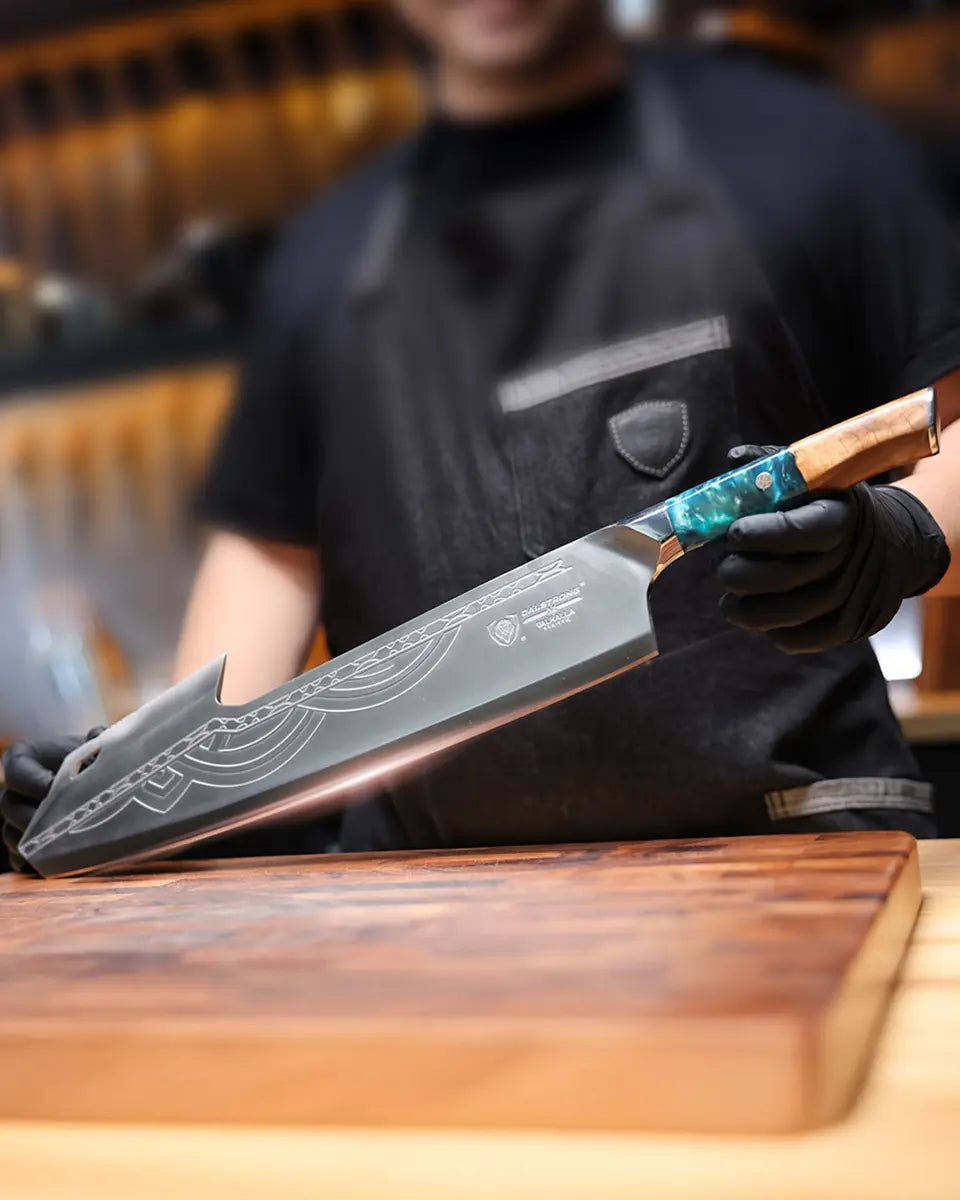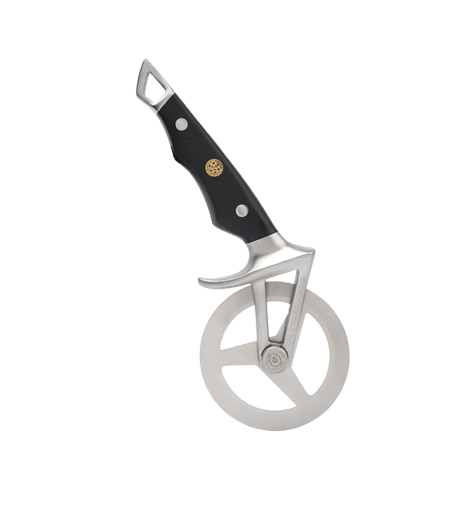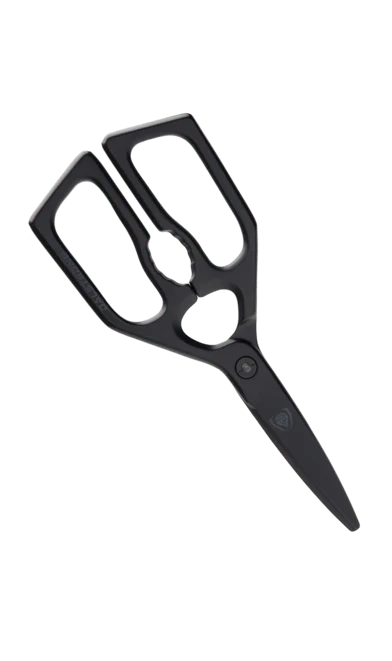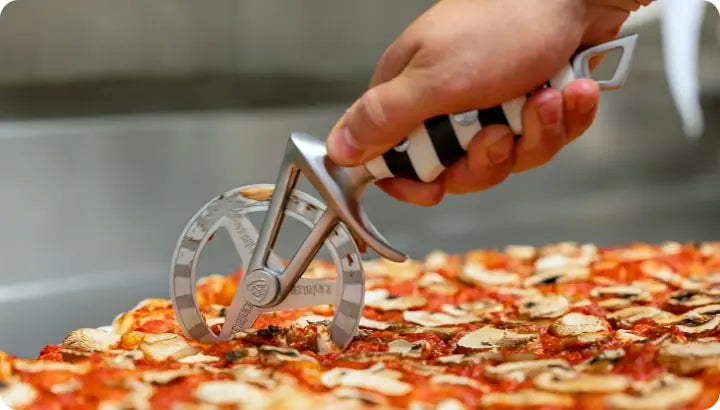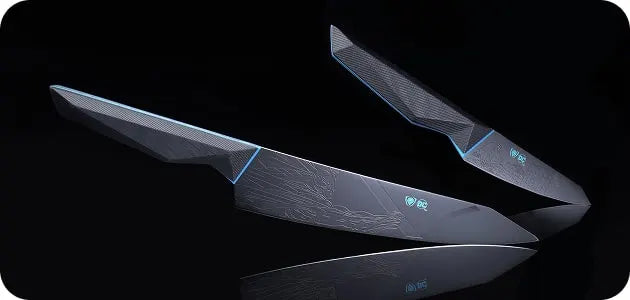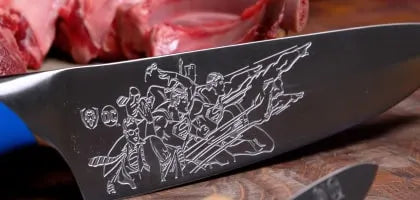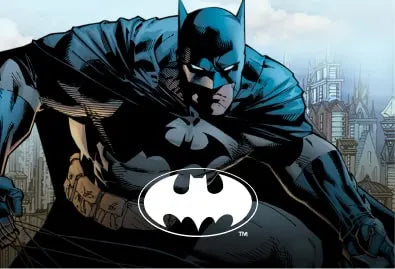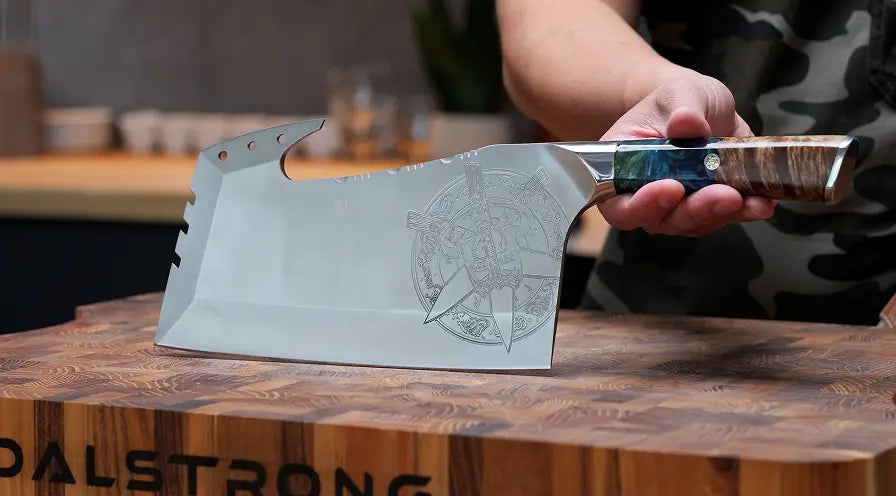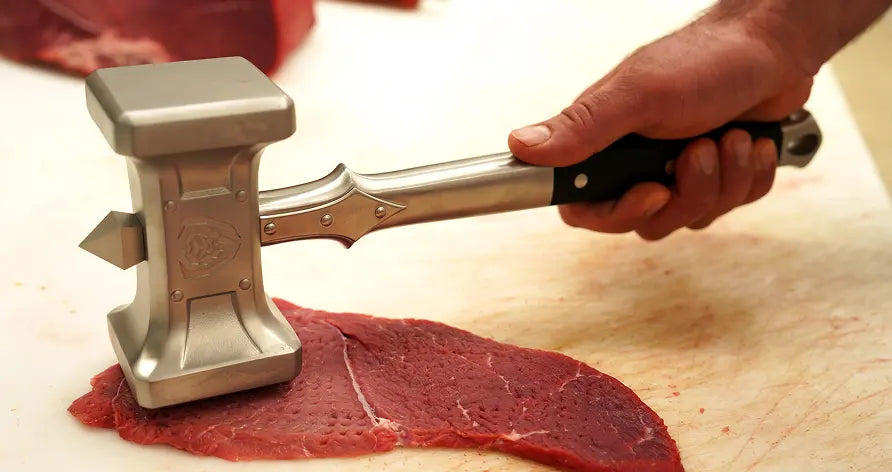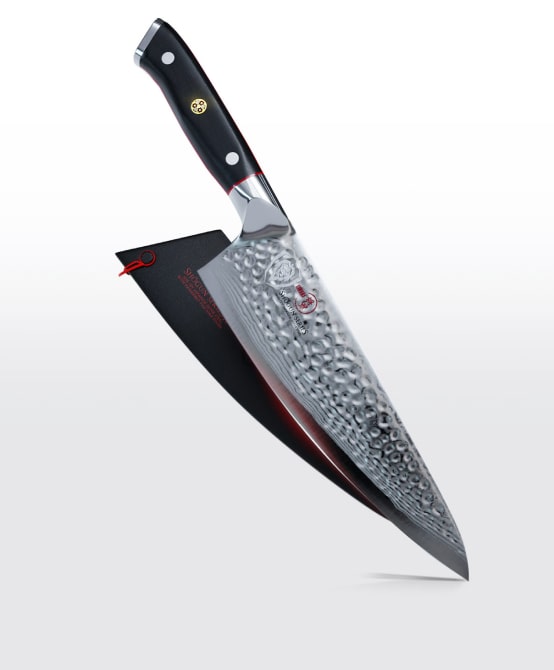1. What Is A Utility Knife?
Shadow Black Series 6.5'' Serrated Utility Knife
If you find yourself asking this question -- or better yet, reading an online explainer about the subject -- you probably already know that the answer isn’t as straightforward as one might think. If you Googled, for instance, “what is a Chef’s knife,” you’d be rewarded with a parade of hundreds of links providing concrete, specific, consistent definitions. Not so much with utility knives.
When we ask the same question of utility knives, we’re going to find a lot of disagreement, a lot of muddy terminology, and a lot of inconsistencies. And this is for the simple reason that there are two distinct uses of the term “utility knife” that, surprisingly, don’t have a lot of overlap: there are culinary utility knives and non-culinary utility knives.
Once you realize that, it all suddenly starts making sense. The puzzle pieces start to fit together, and you are able to really focus in on the specific thing you’re looking for.
Culinary Utility Knives
Culinary utility knives are a type of kitchen knife. They’re there to help you accomplish a number of kitchen tasks. Think of them as the midway point between a chef knife and a paring knife -- a versatile blade knife able to aid you in a wide variety of culinary tasks, such as slicing, trimming, sectioning, coring, peeling, what have you.
Non-culinary Utility Knives
Non-culinary utility knives are the kind you’re likely to find at a hardware store. Do you need to break down cardboard or clamshell packaging? Are you at a construction site and need something to cut though heavier materials like drywall and shingles? A pocket utility knife is exactly what you’re looking for in this situation.
Even though these two types of knives aren’t really related -- you wouldn’t be able to use them interchangeably, that’s for sure -- they both stem from the same basic principle. As the name implies, they are utilitarian. You use them to get things done. They are intended to be heavy duty, multi-use tools that help you out in your day-to-day life. They exist to be useful.
So let’s talk about the different types of utility blades you’ll find out there, and what you should be looking for to find the best utility knife for you.
2. What To Look For In A Utility Knife
The Gladiator Series 5.5'' Serrated Utility Knife
Obviously, the things you look for in a culinary utility knife are going to be pretty different to the things you look for in a box cutter or a pocket knife.
Functionally, they’re very different -- most non-culinary utility knives feature retractable blades, which are handy when it comes to carrying around all day and minimizing risk of injury. These retractable blades make it easy to swap them out when they become damaged or dull, and you can keep some extra blades around for a quick blade change.
However, there is some overlap when it comes to the basic qualities you should be looking for, and this will hold true across all types of knives, whether they’re culinary or otherwise. We are referring to comfort, materials, and appearance. Let’s talk about these important aspects when assessing the best utility knife.
Comfort
Whether we’re talking about a kitchen utility knife with a fixed blade that you’ll be applying to a number of culinary tasks, or a retractable utility knife or cutter you’ll be using to perform heavy duty work around the house, safety is an extremely important factor. And in order for a utility knife to be safe, it needs to handle well and have a good grip.
Not only will this reduce any chance of the knife slipping from your grasp and potentially hurting you (or others), it will also reduce strain after continuous use. After all, if you’re applying it to heavy duty tasks, you’re likely applying some force to it and operating it for long periods of time. Your knife needs to feel easy and effortless in order to be as safe as it can be.
Materials
Believe it or not, having a blade made of quality materials goes hand in hand with the issue of safety. A dull knife is much more dangerous and prone to accidents than a sharp blade, and the heavy duty use of utility knives requires that your knives are as sharp as possible. Always look for quality rather than economy when it comes to materials.
Stainless steel or carbon steel are the most common materials for culinary utility knives, and certainly steel blades are powerful and easy to maintain. They are strong and reliable, with great edge retention. You’ll also find ceramic blades, which tend to be more fragile and break more easily -- in the case of a folding utility knife or a retractable knife with a replaceable blade, a short life for utility knife blades isn’t a dealbreaker.
Appearance
This one might seem a little vain -- after all, the important thing is that your utility knife works well -- but it’s not a minor thing. You want your tools to say something about you. You want them to look good and to feel good to own. Having a utility knife that you feel like you can proudly show off will make the experience of using it so much more enjoyable.
Learn more about where Dalstrong Knives are manufactured here!
3. Best Culinary Utility Knives To Buy
If you’re in the market for the best utility knife for your kitchen, here are some options we’ve picked out for you.
1. Shogun Series 6" Utility Knife
This is a fantastic 6” culinary utility knife that is part of Dalstrong’s acclaimed Shogun Series. This steel blade is not only sharp and powerful, it also looks amazing, featuring the gorgeous “Tsunami Rose” pattern. Easily the most versatile and best utility knife you can own.
PROS:
- Thanks to a system of precise cryogenic tempering with liquid nitrogen, the blade has enhanced strength, flexibility and hardness.
- The single best blade you’ll find here: precision forged from a single piece of ultra-premium Japanese high-carbon AUS-10V steel with 67-alternating layers of SUS410 damascus cladding, adding extra stain resistance and durability.
- Features an ergonomic handle with a non-slip grip for added safety and comfort.
- It’s one amazing-looking knife.
CONS:
- It’s 116g, which makes it a well-balanced kitchen tool, but some cooks may prefer a bit of extra heft for heavy duty work.
- If you’re a fan of a more minimal design, the Tsunami Rose blade pattern might be a bit much. If that’s the case, you’d be well served by the Crusader Series 6" Utility Knife - NSF Certified.
2. Crusader Series 5.5" Serrated Utility Knife - NSF Certified
The Crusader Series features an elegant, less-is-more approach to its aesthetics. This serrated stainless steel knife not only offers a clean, minimalistic look, it also features incredible performance, and is extremely comfortable to handle.
PROS:
- German made ThyssenKrupp x50crmov15 stainless steel blade at 58+ Rockwell, extremely sharp and durable.
- Full tang blade for extra strength and robustness.
- Beautiful minimalist design that will blend in well with the rest of your kitchen.
- Hygienic design makes it very easy to clean.
CONS:
- Unlike the Shogun Series knife, this utility knife does not have a G-10 handle. Instead, it has a high-chromium stainless steel handle.
- It is a serrated blade, which does make sharpening a bit more of a challenge (though you can follow this handy explainer on how to do it).
3. Crusader Series 6" Utility Knife - NSF Certified
Another entry in the Crusader Series, this one is a little longer (6” as opposed to 5.5”) making it suitable for even more uses, and it features a smooth blade instead of a serrated one.
PROS:
- This is a sharp, powerful razor blade; single-piece ThyssenKrupp x50crmov15 blade stainless steel at 58+ Rockwell.
- Optimized, seamless, and hygienic design that leaves virtually no room for debris.
- A sleek design, giving the appearance of speed and forward motion.
- Incredible value for the price.
CONS:
- If you’re looking for a utility knife with a serrated edge, check out the Crusader Series 5.5" Serrated Utility Knife - NSF Certified.
4. Phantom Series 5" Utility Knife
A 5” entry in Dalstrong’s Phantom Series, featuring a sleek design and extremely powerful performance. A great utility knife for the day-to-day demands of every home kitchen.
PROS:
- Extremely sharp blade, hand finished to a mirror polish at 13-15°.
- A comfortable and stylish handle, made of laminated pakkawood handles imported from Spain, providing superior strength and looks.
- Its hygienic design makes it extremely easy to clean and look after.
- A powerful, precision forged blade made of Japanese AUS-8 at 58 HRC.
CONS:
- Because of its size, it’s also one of the lighter knives on this list; if you’re looking for heft, there are other great options available here.
- It has a sleek black Spanish pakkawood handle, while some chefs may prefer the G-10 or stainless steel handles.
5. Shadow Black Series - 6.5" Serrated Utility Knife - NSF Certified
Here’s another serrated utility knife, this time a 6.5” one from the incredible Shadow Black Series. These knives are amazing because they deliver unparalleled performance with a cool, unique, futuristic design.
PROS:
- Features a menacing deep-black Titanium Nitride coating and an impressive aerodynamic design; these are probably the coolest-looking knives you will ever own.
- An awesome and comfortable fiber-resin military-grade G10 handle.
- High-carbon steel serrated blade at 58+ rockwell, for extra “bite” on applications.
- Comes with a premium sheath for blade storage.
CONS:
- If you’re the kind of person who wants all their knives to match with each other, the deep-black look of the Shadow Black Series might not be the best choice for you.
- It is a 6.5” knife, making it one of the larger utility knives in this list. Might be too big for some folks.
6. Shogun Series X 6" Ultimate Utility & Sandwich Knife
The Ultimate Utility & Sandwich Knife from the Shogun Series is one of the most unique and useful knives you can own. Not only can this 6” knife serve as a general utility knife but it will come in extremely handy for the sandwich and burger connoisseurs among us.
PROS:
- The blade is crafted from a single piece of high-carbon Japanese AUS-10V Super steel with an added vacuum treatment, adding extra durability and resistance.
- At 62+ Rockwell edge retention, this knife will have a long life in your kitchen.
- Scalloped serrations and wide blade with a rounded tip which come in extremely handy when it comes to sandwich and burger prep.
- Military grade G-10 handle with an ergonomic design for long and comfortable use.
CONS:
- This multi-purpose knife is in the upper end of the price range represented in this list.
- If you’re not much of a burger or sandwich buff, might be a good idea to check out some of the other knives shown here.
7. Shogun Series 6" Serrated Utility Knife
Here’s another entry in the Shogun Series, a 6” utility knife with a serrated blade. It is a jack of all trades that can be applied to just about any culinary challenge you come upon in the kitchen.
PROS:
- Its serrations are very precisely spaced, creating a great
- Features an ultra-premium G-10 Garolite handle, which doesn’t just look and feel great, it is also nearly impervious to heat, cold and moisture.
- It is durable and stain resistant, precision forged from a single piece of Japanese high-carbon AUS-10V steel with 67-alternating layers of SUS410 damascus cladding.
- Gorgeous “Tsunami Rose” pattern on the blade.
CONS:
- A top-to-bottom premium quality product with an appropriate price tag. Some home cooks might be looking for something a bit more modest.
- The “Tsunami Rose” blade pattern might be a bit busy for some.
8. Gladiator Series 5.5" Serrated Utility Knife
This outstanding 6” serrated utility knife from Dalstrong’s Gladiator series is designed for the tough day-to-day demands of the commercial or home kitchen, and will make quick work of any task you throw at it.
PROS:
- Powerful blade: precision forged, ultra sharp, wear resistant, single-piece, high carbon German ThyssenKrupp stainless steel.
- Its edge is painstakingly hand sharpened to 16-18° per side
- With its carefully designed serrations, you’ll be able to cut uniform slices without tearing, as well as enjoy minimal crumb dispersion.
- Incredible quality at a low price; great bang for your buck here.
CONS:
- Its serrations might make sharpening it a bit more of a struggle.
- At 5.5”, some home cooks might be looking for a utility knife that is a little longer.
4. Other Types Of Utility Knives

Outside of the world of culinary utility knives, you’ll also find various knives that are designed for use around the house or in the world of construction. Professional builders need tools to do their speciality work, as well as a lean toolkit of multipurpose hand tools that can be applied to a variety of jobs. A heavy duty utility knife is a go-to multipurpose workhorse.
You’ll likely hear the term “box cutter” used when referring to certain utility knives, but this isn’t exactly accurate. Yes, box cutters are useful, and they broadly qualify as a type of standard utility knife, but the truth is they’re a lot more lightweight than the types of utility knives used in construction work. A pocket knife can sometimes hack it, but more often than not you’ll need a pro utility knife.
A good utility knife can cut drywall, sheet plastic, roofing shingles, rope, wallpaper, and much more. It will save you time, and you’ll work much safer than you would with a pocket knife or box cutter. A utility knife with a strong body will also last you a long time, as the blades are endlessly replaceable. Of course, you need to make sure to have safe blade storage for all your extra blades, to do a blade change at a moment’s notice.
You also have to think about whether you want a utility knife that is a retractable utility knife (like a breakaway blade or a stanley knife) vs. a fixed blade. Let’s talk about some of the differences.
Fixed blade:
- Blade is fixed in place, giving it more strength.
- Allows for more precise cuts.
- The blade is more easily exposed.
- Easy access (for one-handed styles; more on that later)
- More expensive, but built to last much longer.
Retractable blade:
- The blade of a retractable utility knife pulls into the body for easy storage.
- Creates more potential for bending or snapping.
- With a retractable utility knife, there’s lots of pulling the blade in and out, which can be tedious if you are using it often.
- Inexpensive, not designed for constant use. You’ll be performing blade changes often.
- Good for DIY and fast projects.
Within the world of fixed blade knives, you’ll also have to think about whether you want a folding knife or a one-handed utility knife. This comes down to a matter of preference and how you like to work.
If you’ll only be using your knife occasionally, a folding knife is good -- kind of like a pocket knife in that they are smaller and portable, and they are safe to keep in your pocket clip or belt clip. Keeping a folding utility knife in your pocket clip or belt clip will make it easy to quickly access when you need one in a pinch.
If you find yourself using your utility knife often, you’ll want a one-handed one to avoid the tedious task if opening and closing your knife over and over again. These come with a blade mechanism that easily snaps the blade cover on and off.
Some utility knives feature a belt clip or pocket clip for easy access. You might also find ones with a built-in wire stripper for electrical work, and even sometimes a bottle opener. You may also find a built-in lanyard hole, if you prefer to hang them from your belt that way rather than a belt clip or pocket clip.
5. Frequently Asked Questions
Shogun Series X 6'' Utility & Sandwich Knife
Can you sharpen a utility knife?
Not only can you sharpen a utility knife, you should! As we’ve established, whether we’re talking about culinary utility knives or the type you keep around the house to open boxes or cut vinyl tiles, these tools are meant to make life easier for you, and the only way they can really do that is by being as sharp as they can be.
Follow the steps in this handy explainer to learn how to sharpen your knife (if it’s designed to be sharpened). If you’re not using a fixed blade utility knife, you can buy and install a replacement blade. It’s always a good idea to have a few spare blades stored (careful to exercise safe blade storage) so you can perform a quick blade change when needed.
What is the difference between a box cutter and a utility knife?
When referring to non-culinary utility knives, the terms “box cutter” and “utility knife” are sometimes used interchangeably, but there is a slight difference. Standard box cutters are inexpensive and useful for DIY projects, slicing through things like packing tape and cardboard, but won’t be tough enough to handle constant use on a construction site.
A box cutter is just not the best utility knife for the really tough jobs. Even though a pocket knife may be useful in many instances, it will wear down quickly, and often not work for the task you’re attempting. Utility knives for building professionals can cut through heavier materials like drywall or shingles.
What is the difference between a paring knife and a culinary utility knife?
This is a common mix-up. The culinary utility knife is larger than the standard paring knife, making it better suited for a broader range of daily uses. If you’re interested in learning about the best paring knives you can buy, check out our post about that topic here.
Shop Dalstrong Utility Knives Today
Written by Jorge Farah
Born on the coast of Colombia and based in Buenos Aires, Jorge is a cooking enthusiast and kitchenware obsessive with a tremendous amount of opinions.



